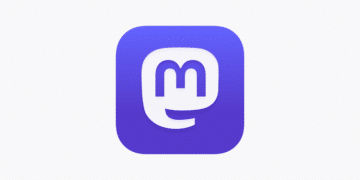In recent developments, the cybersecurity community has been alerted to a critical security concern involving the exploitation of vulnerabilities in the widely-used remote access tool, ConnectWise ScreenConnect. Security experts are raising alarms about the active exploitation of two high-risk flaws, CVE-2024-1709 and CVE-2024-1708, by cybercriminals, leading to the deployment of the notorious LockBit ransomware.

The Vulnerabilities Unveiled
CVE-2024-1709: An Embarrassingly Easy Entry Point
One of the flaws, CVE-2024-1709, is an authentication bypass vulnerability that has proven to be “embarrassingly easy” to exploit. Cybersecurity researchers have noted a surge in exploitation, shortly after ConnectWise released security updates. Organizations are urged to promptly patch their systems to mitigate the risk associated with this vulnerability.
CVE-2024-1708: A Path Traversal Vulnerability
The second flaw, CVE-2024-1708, is a path traversal vulnerability. When combined with CVE-2024-1709, it allows threat actors to remotely plant malicious code on affected systems. This dual-exploitation approach enhances the potency of the attack, making it imperative for organizations to address both vulnerabilities to ensure comprehensive protection.
LockBit Ransomware Strikes Again
Security researchers at Huntress and Sophos have reported multiple instances of LockBit ransomware attacks following the exploitation of these ConnectWise vulnerabilities. Despite recent law enforcement operations targeting LockBit’s infrastructure, it appears that some affiliates are still active and operational, underscoring the persistent threat landscape.
Christopher Budd, Director of Threat Research at Sophos X-Ops, emphasizes that ScreenConnect serves as the starting point for the observed execution chain. Notably, the version of ScreenConnect in use during these attacks was found to be vulnerable, highlighting the critical role of prompt software updates in mitigating such risks.
Max Rogers, Senior Director of Threat Operations at Huntress, echoes these observations, revealing that LockBit ransomware has been deployed across various industries through exploits of the ScreenConnect vulnerability. The affected industries span a wide spectrum, indicating the indiscriminate nature of the attacks.
Operation Cronos: A Law Enforcement Response
While LockBit’s infrastructure faced a significant blow through “Operation Cronos,” which involved the U.K.’s National Crime Agency, the aftermath reveals the challenges in eradicating the threat entirely. LockBit’s public-facing websites, including the dark web leak site, were taken down, providing a glimpse into the gang’s operations. However, the recent exploits leveraging ConnectWise flaws underscore the lingering reach of LockBit’s network.
ConnectWise’s Response and the Unknown Impact
ConnectWise, a provider of remote access technology to over a million small to medium-sized businesses, has yet to disclose the extent of the impact on its ScreenConnect users. Patrick Beggs, Chief Information Security Officer at ConnectWise, stated that as of today, they haven’t observed the deployment of ransomware internally. However, the magnitude of the vulnerabilities and the wide usage of ScreenConnect necessitate a thorough assessment of potential impacts.
Assessing the Extent of Exploitation
The Shadowserver Foundation, known for its vigilance in tracking malicious internet activity, reported that the ScreenConnect flaws are “widely exploited.” According to their findings, 643 IP addresses have been observed exploiting these vulnerabilities, with more than 8,200 servers remaining vulnerable. These numbers underscore the urgency for organizations to act promptly in securing their systems.
The exploitation of ConnectWise ScreenConnect vulnerabilities serves as a stark reminder of the evolving threat landscape. As organizations race to patch their systems and enhance cybersecurity measures, the resilience and adaptability of threat actors, exemplified by LockBit ransomware, continue to pose formidable challenges. A comprehensive and proactive approach to cybersecurity, including timely updates and threat intelligence integration, is crucial to mitigating these risks in an ever-changing digital landscape.



















